Abstract
When the piliated colony types of Neisseria gonorrhoeae, which predominate in recent isolates, were nonselectively subcultured in vitro, they gave rise to large numbers of nonpiliated, avirulent colonial variants. Evidence is presented to show that most of this variation occurs after active growth has ceased and that the variation is sensitive to the action of deoxyribonuclease. We suggest that this variation is a result of transformation. A second variation in colonial morphology involved differing levels of "colony opacity-associated proteins" in the outer membrane. This variation was also inhibited by the presence of deoxyribonuclease, but the genetic basis for it is not as yet clear.
Full text
PDF


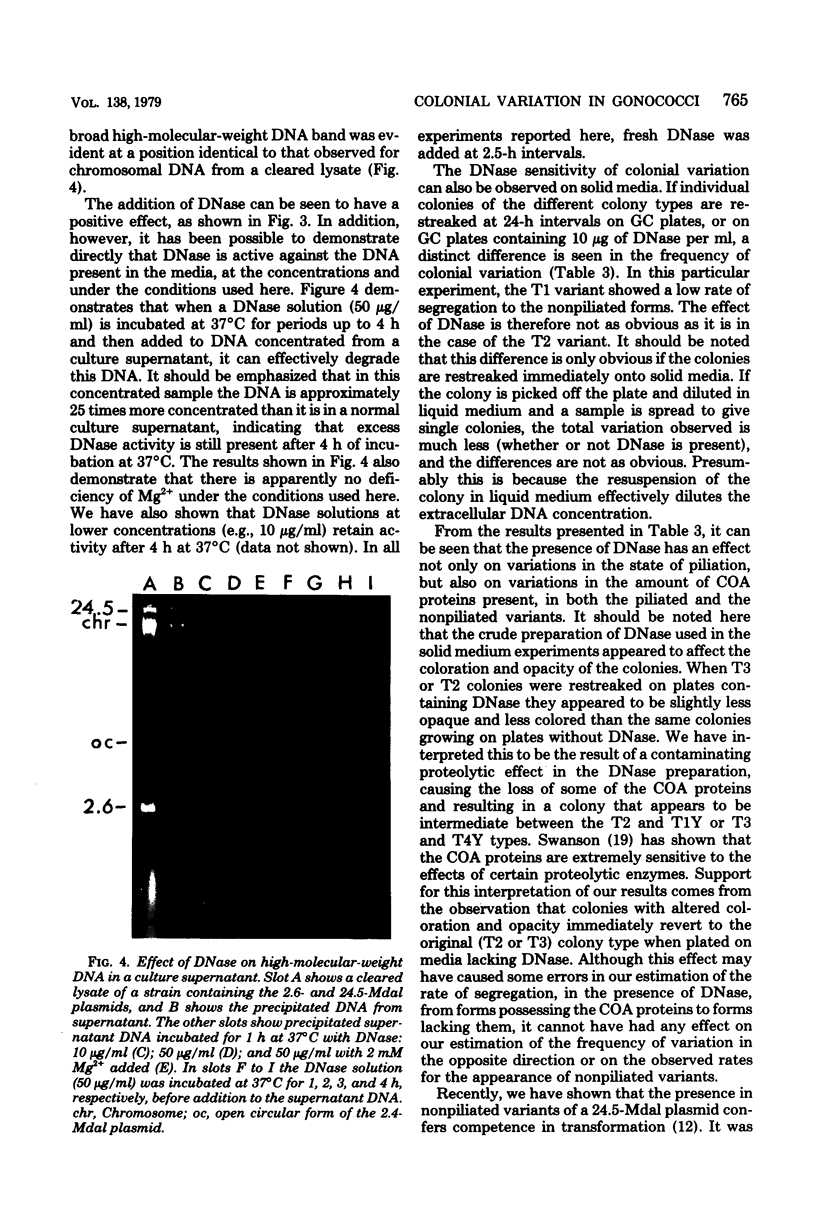
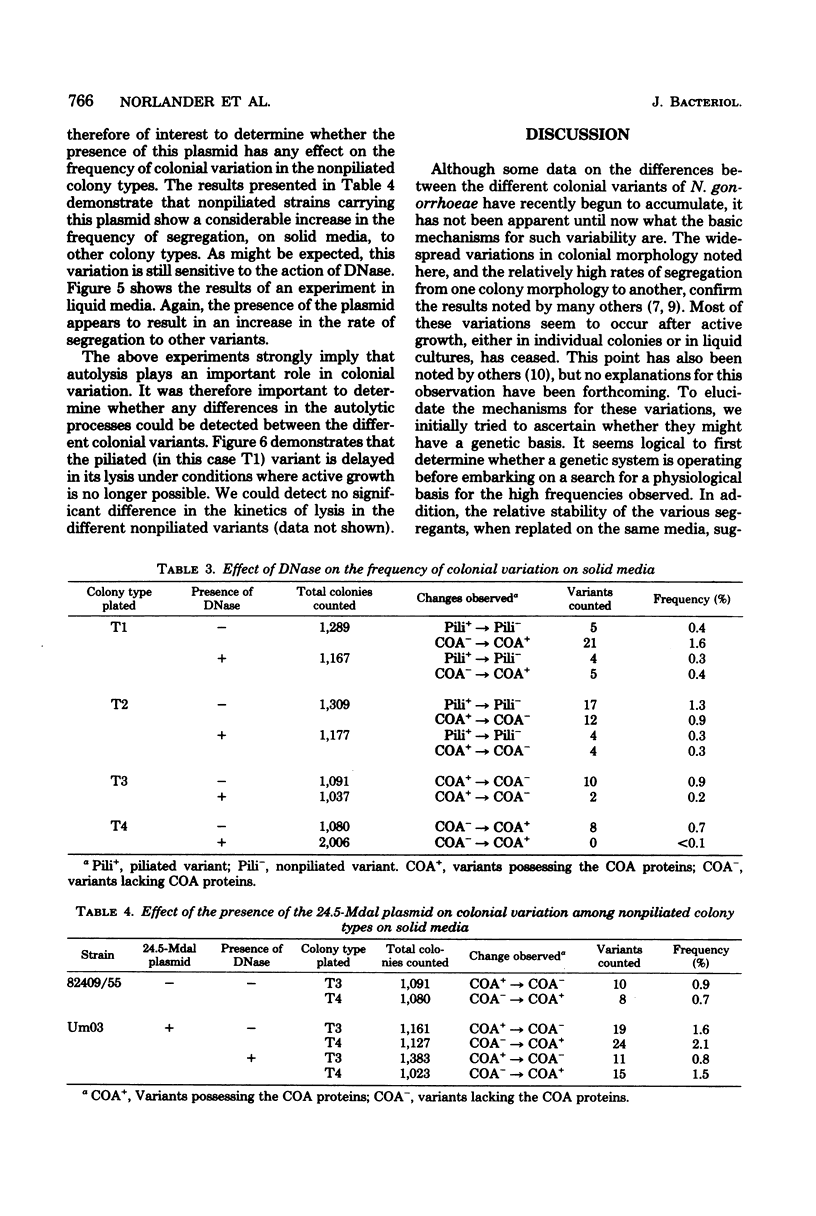
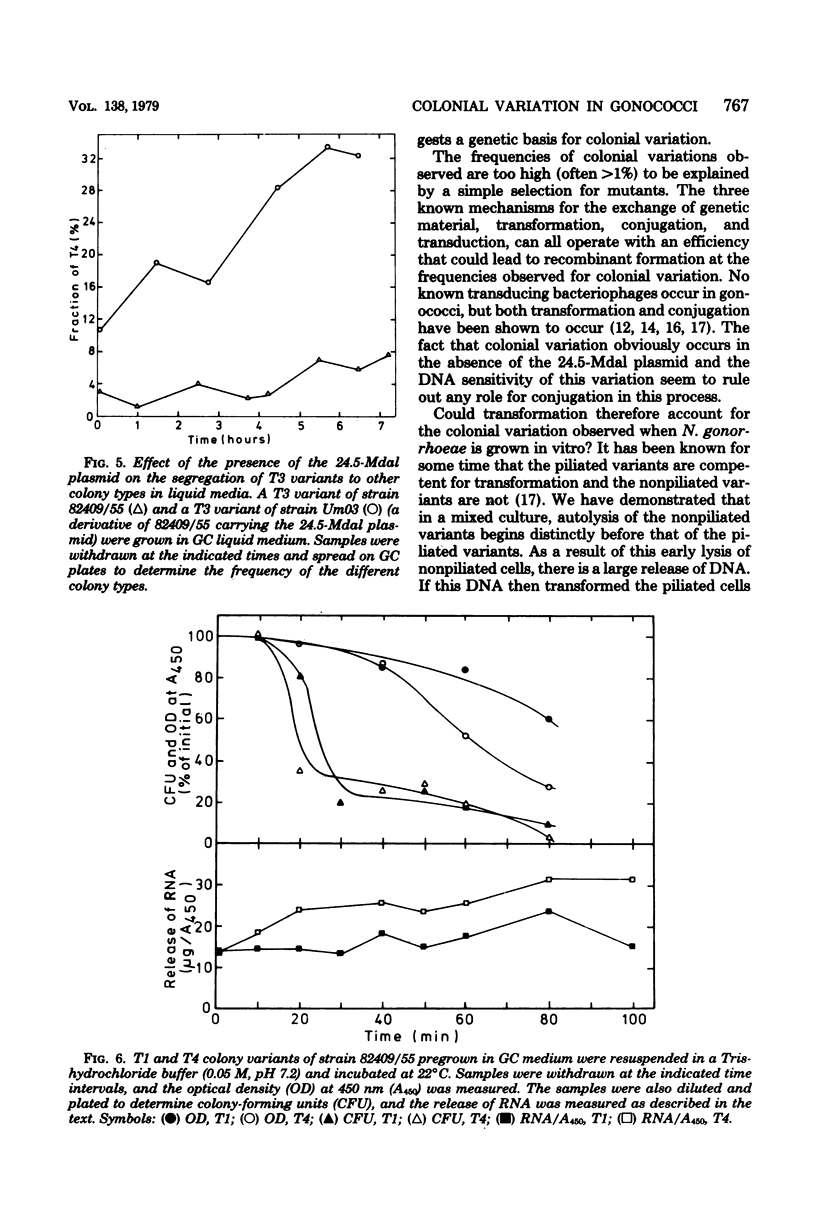
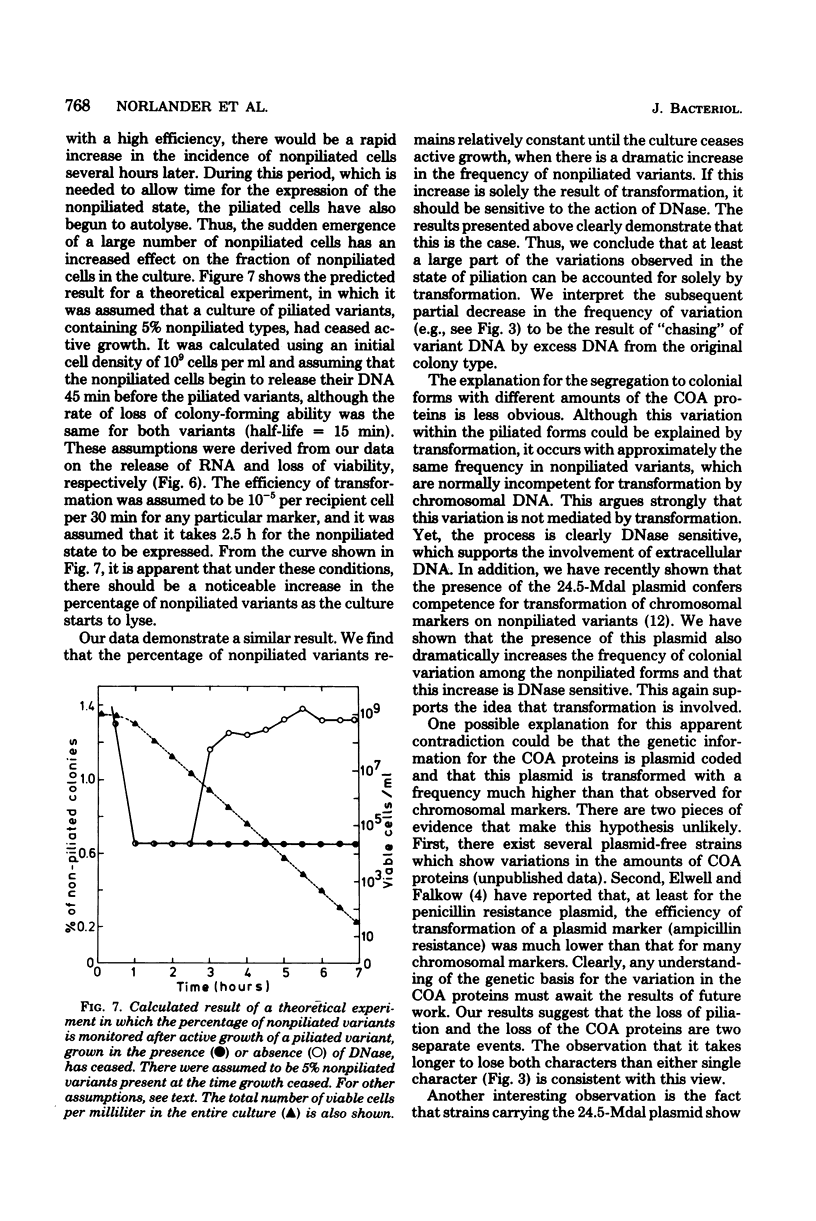
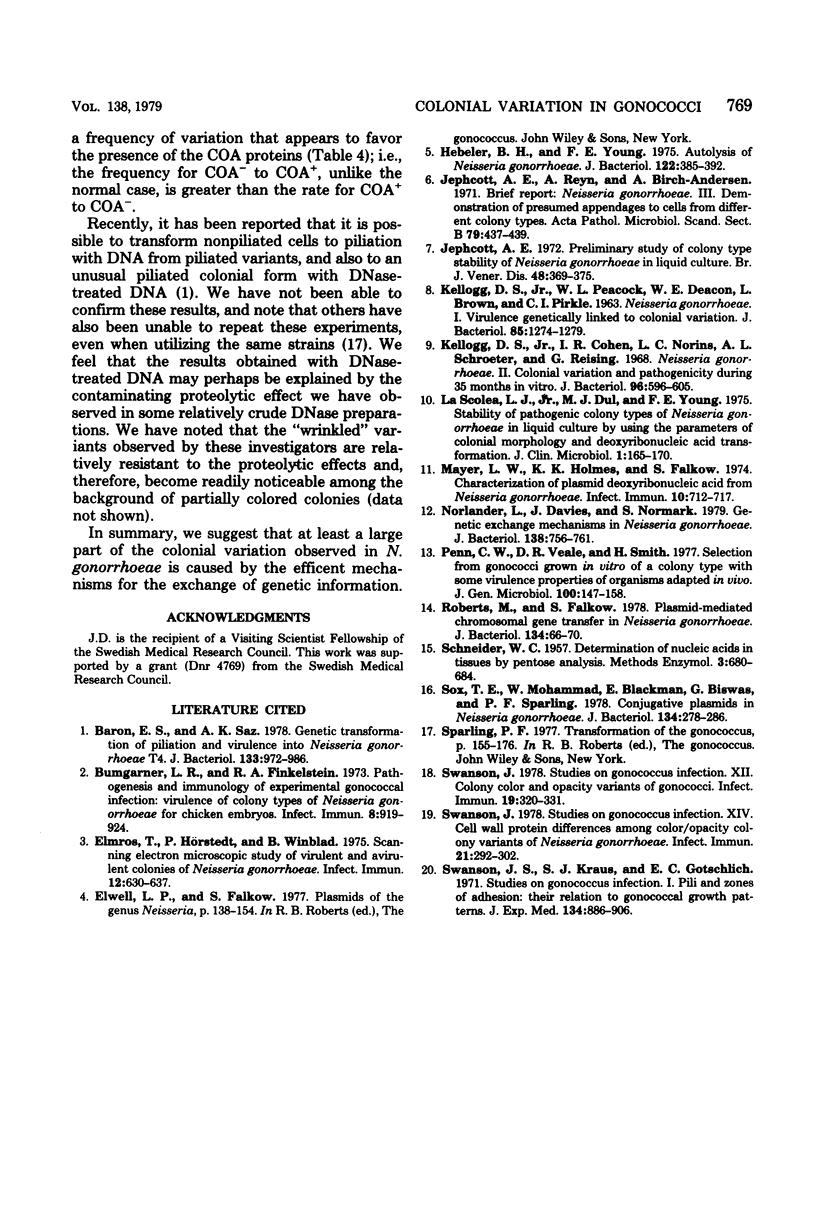
Images in this article
Selected References
These references are in PubMed. This may not be the complete list of references from this article.
- Baron E. S., Saz A. K. Genetic transformation of pilation and virulence into Neisseria gonorrhoeae T4. J Bacteriol. 1978 Feb;133(2):972–986. doi: 10.1128/jb.133.2.972-986.1978. [DOI] [PMC free article] [PubMed] [Google Scholar]
- Bumgarner L. R., Finkelstein R. A. Pathogenesis and immunology of experimental gonococcal infection: virulence of colony types of Neisseria gonorrhoeae for chicken embryos. Infect Immun. 1973 Dec;8(6):919–924. doi: 10.1128/iai.8.6.919-924.1973. [DOI] [PMC free article] [PubMed] [Google Scholar]
- Elmros T., Hörstedt P., Winblad B. Scanning electron microscopic study of virulent and avirulent colonies of Neisseria gonorrhoeae. Infect Immun. 1975 Sep;12(3):630–637. doi: 10.1128/iai.12.3.630-637.1975. [DOI] [PMC free article] [PubMed] [Google Scholar]
- Hebeler B. H., Young F. E. Autolysis of Neisseria gonorrhoeae. J Bacteriol. 1975 May;122(2):385–392. doi: 10.1128/jb.122.2.385-392.1975. [DOI] [PMC free article] [PubMed] [Google Scholar]
- Jephcott A. E. Preliminary study of colony type stability of Neisseria gonorrhoeae in liquid culture. Br J Vener Dis. 1972 Oct;48(5):369–375. doi: 10.1136/sti.48.5.369. [DOI] [PMC free article] [PubMed] [Google Scholar]
- Jephcott A. E., Reyn A., Birch-Andersen A. Neisseria gonorrhoeae 3. Demonstration of presumed appendages to cells from different colony types. Acta Pathol Microbiol Scand B Microbiol Immunol. 1971;79(3):437–439. doi: 10.1111/j.1699-0463.1971.tb00086.x. [DOI] [PubMed] [Google Scholar]
- KELLOGG D. S., Jr, PEACOCK W. L., Jr, DEACON W. E., BROWN L., PIRKLE D. I. NEISSERIA GONORRHOEAE. I. VIRULENCE GENETICALLY LINKED TO CLONAL VARIATION. J Bacteriol. 1963 Jun;85:1274–1279. doi: 10.1128/jb.85.6.1274-1279.1963. [DOI] [PMC free article] [PubMed] [Google Scholar]
- Kellogg D. S., Jr, Cohen I. R., Norins L. C., Schroeter A. L., Reising G. Neisseria gonorrhoeae. II. Colonial variation and pathogenicity during 35 months in vitro. J Bacteriol. 1968 Sep;96(3):596–605. doi: 10.1128/jb.96.3.596-605.1968. [DOI] [PMC free article] [PubMed] [Google Scholar]
- La Scolea L. J., Jr, Dul M. J., Young F. E. Stability of pathogenic colony types of Neisseria gonorrhoeae in liquid culture by using the parameters of colonial morphology and deoxyribonucleic acid transformation. J Clin Microbiol. 1975 Feb;1(2):165–170. doi: 10.1128/jcm.1.2.165-170.1975. [DOI] [PMC free article] [PubMed] [Google Scholar]
- Mayer L. W., Holmes K. K., Falkow S. Characterization of plasmid deoxyribonucleic acid from Neisseria gonorrhoeae. Infect Immun. 1974 Oct;10(4):712–717. doi: 10.1128/iai.10.4.712-717.1974. [DOI] [PMC free article] [PubMed] [Google Scholar]
- Norlander L., Davies J., Normark S. Genetic exchange mechanisms in Neisseria gonorrhoeae. J Bacteriol. 1979 Jun;138(3):756–761. doi: 10.1128/jb.138.3.756-761.1979. [DOI] [PMC free article] [PubMed] [Google Scholar]
- Penn C. W., Veale D. R., Smith H. Selection from gonococci grown in vitro of a colony type with some virulence properties of organisms adapted in vivo. J Gen Microbiol. 1977 May;100(1):147–158. doi: 10.1099/00221287-100-1-147. [DOI] [PubMed] [Google Scholar]
- Roberts M., Falkow S. Plasmid-mediated chromosomal gene transfer in Neisseria gonorrhoeae. J Bacteriol. 1978 Apr;134(1):66–70. doi: 10.1128/jb.134.1.66-70.1978. [DOI] [PMC free article] [PubMed] [Google Scholar]
- Sox T. E., Mohammed W., Blackman E., Biswas G., Sparling P. F. Conjugative plasmids in Neisseria gonorrhoeae. J Bacteriol. 1978 Apr;134(1):278–286. doi: 10.1128/jb.134.1.278-286.1978. [DOI] [PMC free article] [PubMed] [Google Scholar]
- Swanson J., Kraus S. J., Gotschlich E. C. Studies on gonococcus infection. I. Pili and zones of adhesion: their relation to gonococcal growth patterns. J Exp Med. 1971 Oct 1;134(4):886–906. doi: 10.1084/jem.134.4.886. [DOI] [PMC free article] [PubMed] [Google Scholar]
- Swanson J. Studies on gonococcus infection. XII. Colony color and opacity varienats of gonococci. Infect Immun. 1978 Jan;19(1):320–331. doi: 10.1128/iai.19.1.320-331.1978. [DOI] [PMC free article] [PubMed] [Google Scholar]
- Swanson J. Studies on gonococcus infection. XIV. Cell wall protein differences among color/opacity colony variants of Neisseria gonorrhoeae. Infect Immun. 1978 Jul;21(1):292–302. doi: 10.1128/iai.21.1.292-302.1978. [DOI] [PMC free article] [PubMed] [Google Scholar]



